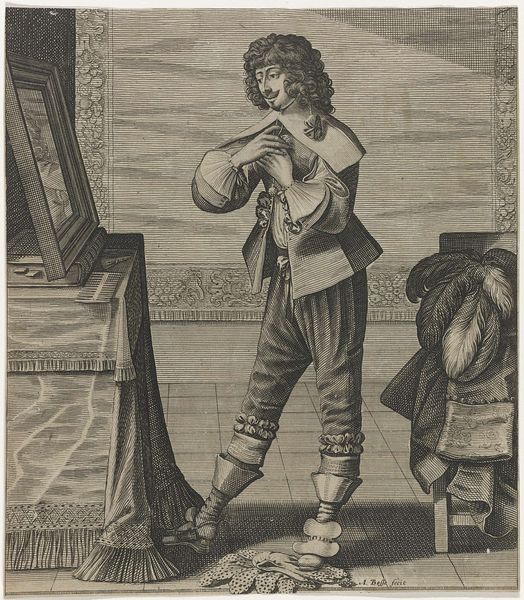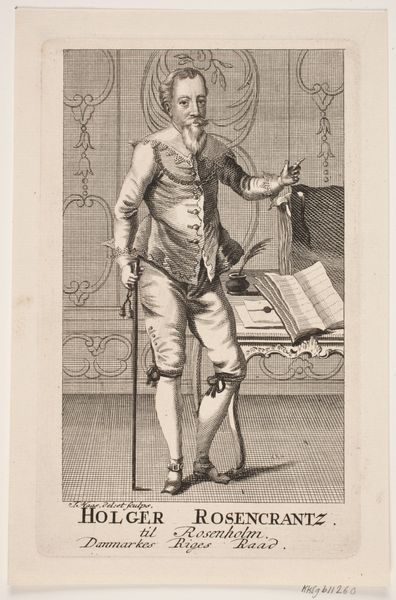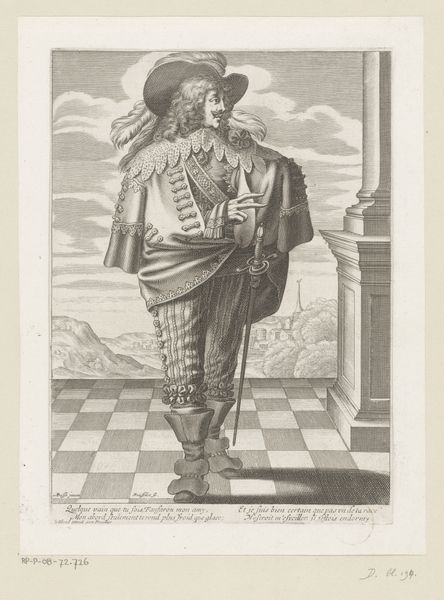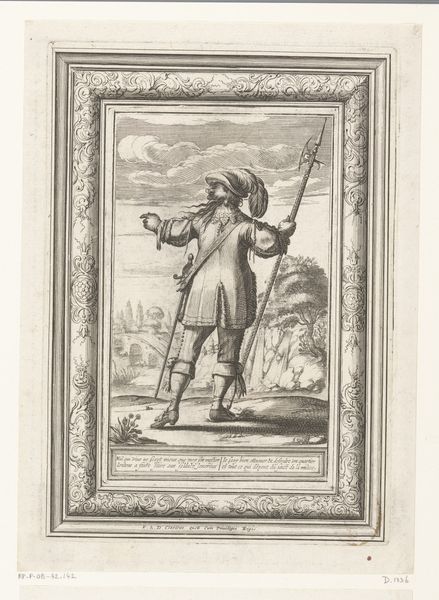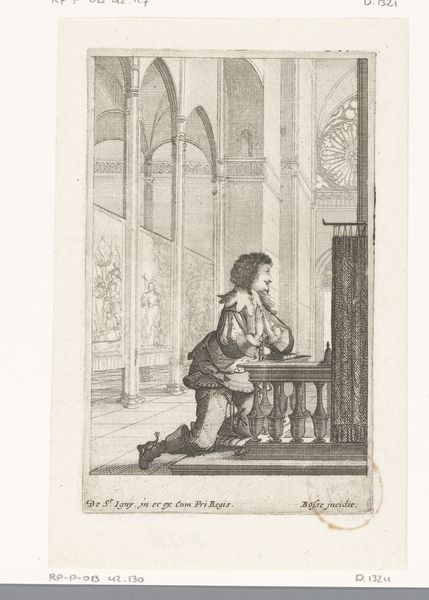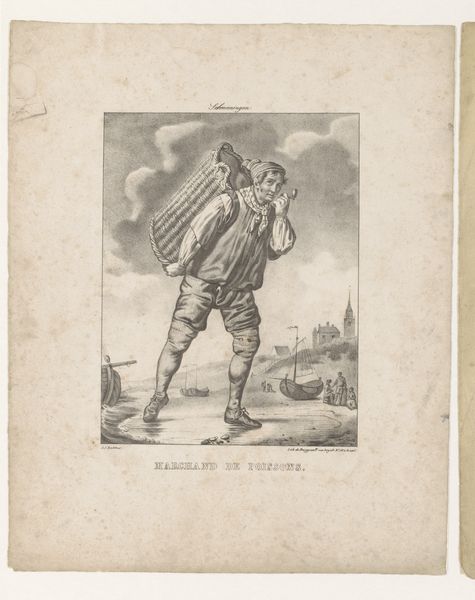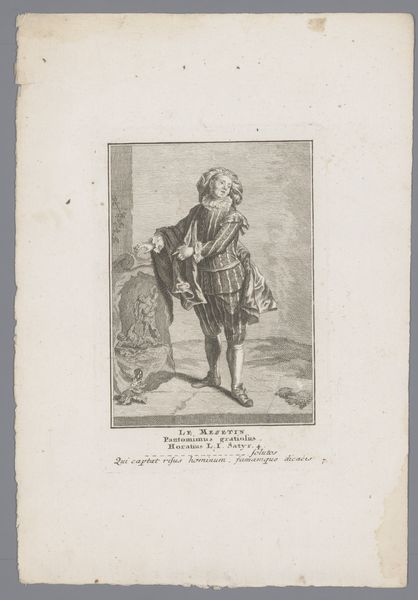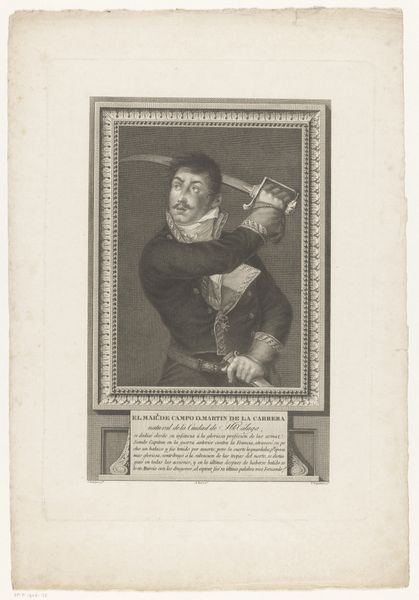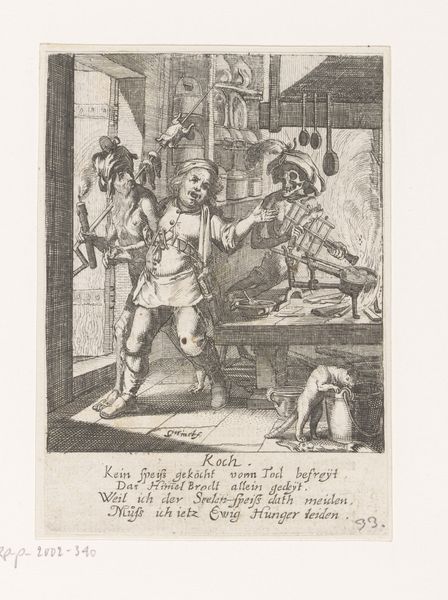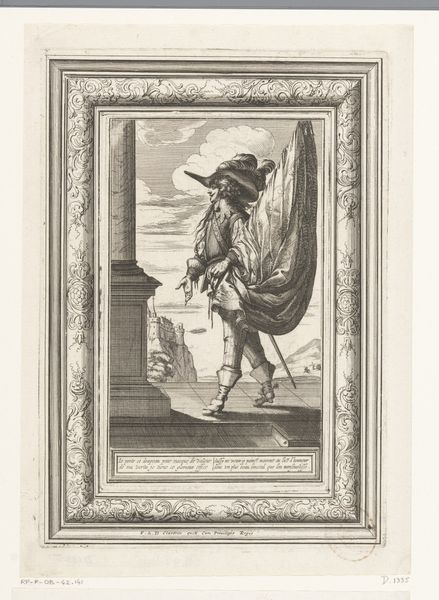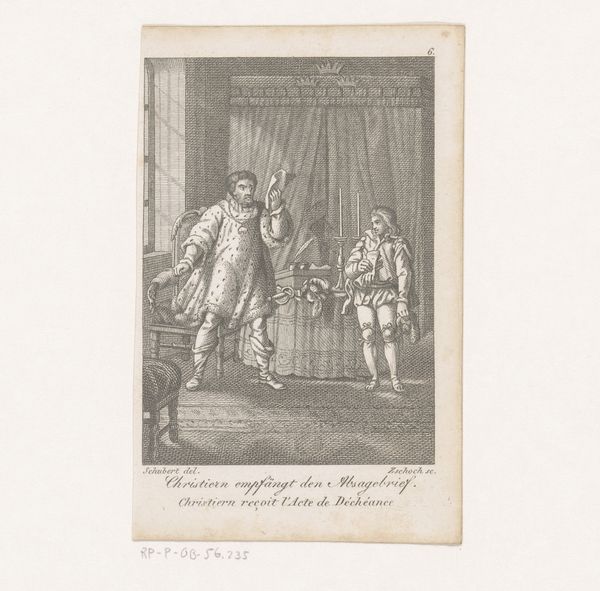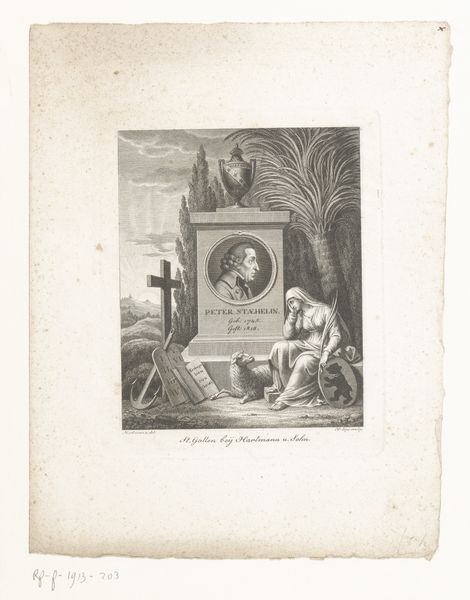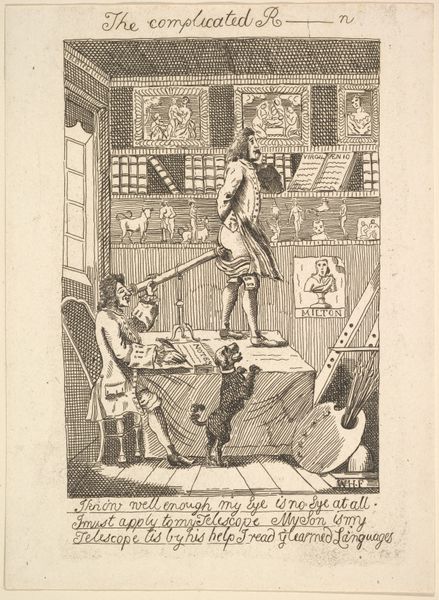
print, engraving
#
portrait
#
baroque
# print
#
old engraving style
#
traditional media
#
figuration
#
line
#
genre-painting
#
engraving
Dimensions: height 286 mm, width 203 mm
Copyright: Rijks Museum: Open Domain
Editor: Here we have Abraham Bosse's "French Courtier Following the Edict of 1633," created in, well, 1633, using engraving. I'm immediately struck by how this piece seems to be poking fun at someone trying too hard to fit in. It's almost comical! What do you see in this image? Curator: It's a fascinating snapshot of social regulation through fashion. Consider the Edict of 1633: a real attempt by the French crown to curb excess in dress, particularly amongst the court. This print then becomes more than just a portrait, it is social commentary. Editor: Social commentary through an engraving? Curator: Exactly! Bosse isn't just depicting a fashionable man, he’s showing us the *performance* of adherence to rules imposed by the monarchy. How might the public have perceived this figure at the time? As fashionable or ridiculous? Editor: Probably a mix of both? He's clearly trying, but maybe trying too hard, thus amplifying the crown’s perceived authority or control over the upper classes? Curator: Precisely. Bosse's prints circulated widely, shaping perceptions and sparking dialogue about courtly life and royal power. Do you notice how carefully rendered his posture and clothes are? What is emphasized? Editor: It’s like he's advertising his…obedience, but perhaps inadvertently highlighting the artificiality of it all. The exaggerated bows at his knees make me think the dress and pose is not something he would actually do! Curator: And therein lies the social critique. Art becomes a mirror, reflecting societal norms, anxieties, and the ongoing power dynamics between the individual and institutions. Editor: That’s really insightful. I'm now thinking about the role of satire in shaping public opinion back then, not just beautiful portraiture. Curator: It changes our view, doesn't it? A print, like this one, can open a window into a past world – its struggles, its aspirations, and its exercise of soft and hard power.
Comments
No comments
Be the first to comment and join the conversation on the ultimate creative platform.
